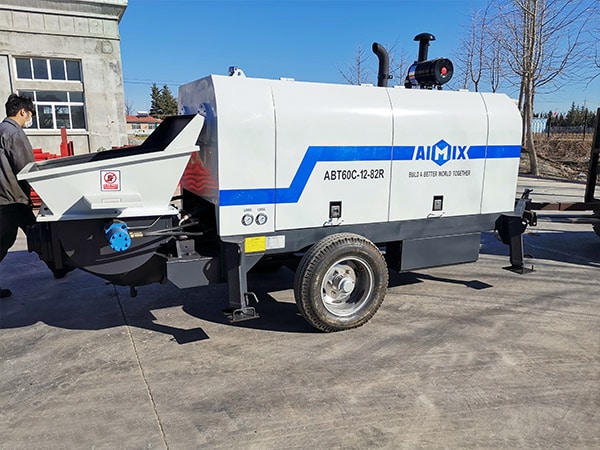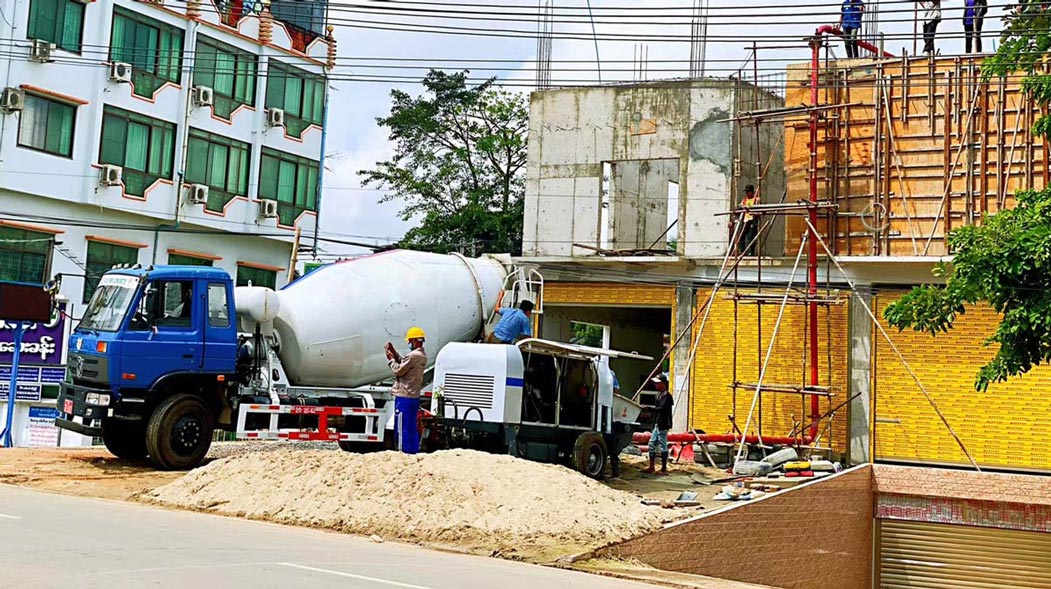Choosing the right concrete pump can significantly impact the efficiency and success of a construction project. The decision between a static and portable concrete pump involves evaluating various factors such as project size, location, and specific needs. Each type of concrete pump solution offers unique advantages and potential drawbacks. By understanding these distinctions, construction professionals can make informed decisions that enhance productivity and ensure optimal results.
Understanding Static Concrete Pumps
Features and Benefits
Static concrete pumps, also known as stationary pumps, are mounted on a solid foundation at the construction site. These pumps are renowned for their high capacity and ability to deliver concrete over long distances and heights. They are ideal for large-scale projects such as high-rise buildings, bridges, and tunnels, where a consistent and powerful concrete flow is essential.
The primary benefit of static pumps is their robust performance. With powerful engines and high-pressure output, they can handle large volumes of concrete without interruption. Additionally, static pumps offer excellent precision in concrete placement, making them suitable for intricate construction tasks. Their durability and low maintenance requirements further enhance their appeal for prolonged projects.

Considerations and Drawbacks
Despite their advantages, static concrete pumps have some limitations. One significant drawback is their lack of mobility. Once installed, these pumps are not easily relocated, making them less suitable for projects that require frequent movement of equipment. The initial setup can be time-consuming and requires a stable base, which might not be feasible in all construction environments.
Another consideration is the higher upfront cost compared to portable pumps. The investment in a static concrete pump can be substantial, and this cost must be weighed against the expected duration and demands of the project. Additionally, the need for extensive pipeline networks to transport concrete from the pump to the placement site can add to the overall complexity and cost of using a static pump.
Exploring Portable Concrete Pumps
Features and Benefits
Portable concrete pumps, also known as mobile pumps, are mounted on trailers or trucks, allowing for easy transportation between different job sites. These pumps are highly versatile and are particularly beneficial for smaller or medium-sized projects that require quick setup and relocation. Portable pumps are equipped with flexible hoses, enabling them to reach difficult or confined areas that static pumps cannot access.

The mobility of portable pumps offers a significant advantage in terms of flexibility. Construction teams can move the pump as needed, ensuring efficient concrete delivery across various sections of a site. This adaptability is crucial for projects with changing needs or multiple stages. Additionally, the lower initial cost of portable pumps makes them an attractive option for contractors with budget constraints or those handling diverse projects.
Considerations and Drawbacks
However, portable concrete pumps also have limitations. Their lower capacity and pressure output compared to static pumps can be a disadvantage for large-scale projects. Portable pumps might struggle with delivering concrete over long distances or to significant heights, which could hinder their performance in certain construction scenarios.
Maintenance and operational costs can be higher for portable pumps due to the frequent relocation and potential wear and tear associated with transportation. Furthermore, the reliance on flexible hoses, while offering greater reach, can sometimes result in decreased precision in concrete placement. Construction teams must carefully manage the concrete pump portable‘s positioning to ensure consistent and accurate delivery.
Making the Right Choice
Project Assessment
Selecting between a static and portable concrete pump requires a thorough assessment of the project’s specific needs and constraints. Key factors to consider include the size and scope of the project, the required concrete delivery distance and height, and the availability of a stable base for a static pump. For large, continuous projects requiring high-volume concrete placement, a static pump is often the preferred choice. Conversely, for projects with varying demands and locations, a portable pump offers the necessary flexibility and ease of use. AIMIX sales team will advise you the best type of concrete pump for your project.
Cost-Benefit Analysis
Conducting a cost-benefit analysis is essential to determine the most economical option. While static pumps involve higher initial costs, their efficiency and durability can provide long-term savings on large projects. Portable pumps, with their lower upfront costs and versatility, may offer better value for smaller or multi-site projects. Contractors should also consider the potential costs associated with maintenance, setup, and transportation to make a well-informed decision.
In conclusion, the choice between a static and portable concrete pump hinges on a careful evaluation of project requirements, budget considerations, and operational constraints. By understanding the features, benefits, and limitations of each type of pump, construction professionals can select the solution that best aligns with their needs, ensuring efficient and cost-effective concrete placement.